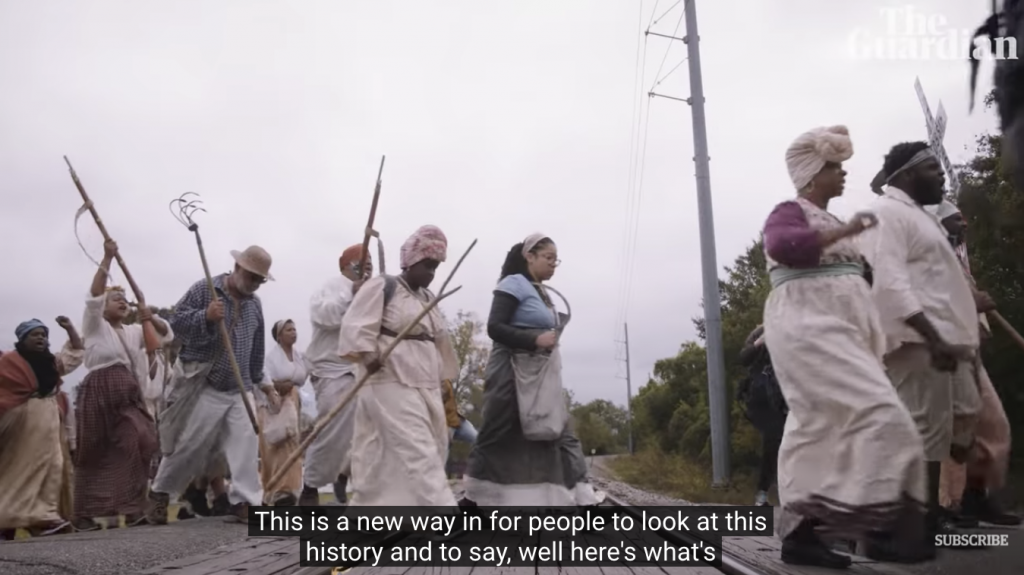
Credit: The Guardian, a still from video piece
A community-engaged artist performance and film production that, on November 8-9, 2019, reimagined the German Coast Uprising of 1811, which took place in the river parishes just outside of New Orleans. Envisioned and organized by artist Dread Scott and documented by filmmaker John Akomfrah, Slave Rebellion Reenactment (SRR) animated a suppressed history of people with an audacious plan to organize and seize Orleans Territory, to fight not just for their own emancipation, but to end slavery. It is a project about freedom.
The artwork involved hundreds of reenactors in period specific clothing marching for two days covering 26 miles. The reenactment, the culmination of a period of organizing and preparation, took place upriver from New Orleans in the locations where the 1811 revolt occurred—with the exurban communities and industry that have replaced the sugar plantations as its backdrop. The reenactment was an impressive and startling sight—hundreds of Black re-enactors, many on horses, flags flying, in 19th-century French colonial garments, singing in Creole and English to African drumming.


